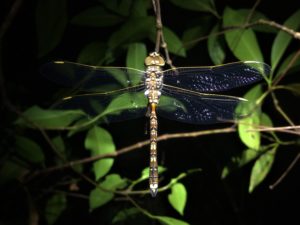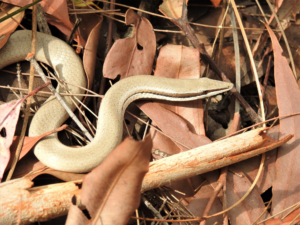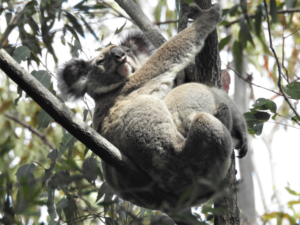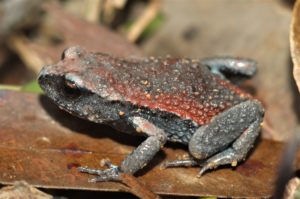
The biodiversity of Griffith’s Gold Coast campus continues to bloom, with a recent survey revealing an increase in wildlife species on site to more than 130 different types.

From frogs and flying foxes, to owls and cute koalas, researchers have now identified 11 new species living at the campus.
School of Environment and Science senior lecturer Dr Guy Castley said the biodiversity blitz had a focus on vertebrate species and was conducted over five days, with bird surveys beginning at 6am.
“We recorded 39 (bird) species across six established transects,” Dr Castley said.

“Of these, four were new species for the campus,
bringing the total avian richness to 71 for the Gold Coast campus.”The new species include the Brush Cuckoo, Eastern Koel, Bush Stone Curlew and Southern Boobook.
“We also observed two of the threatened species that can be found on our campus – the Glossy Black-Cockatoo and the Powerful Owl,” Dr Castley said.

During active searches for reptiles and amphibians, 10 species were recorded. Two of these, the cream-striped shining skink and striped marsh frog, have never been seen on campus before.
Mammals were spotted using spotlighting surveys from 7-10pm, with opportunistic oq qq da zbservations made at other times.
“We observed a few common larger mammals, including macropods such as eastern grey kangaroo and red-necked wallaby, as well as common brushtail possum,” Dr Castley said.

“A highlight was a koala with a joey in the small Frog Lane remnant.
“We also recorded nine species of microbats using an echolocation detector, of which five are new to the campus.”
The group also made visual observations of two flying fox species, including the threatened grey-headed flying fox.
The surveys emphasises the importance of retaining natural habitats in urban environments.

A diverse wildlife community persists in these areas, and the habitat continues to support threatened species despite historical transformation.
Discipline head of Ecology and Evolution Professor Catherine Pickering said some species also responded well to man-made interventions such as the Frog Lane creek system, which supports a variety of frog species.
“The creek system was built in the 1980s by Alistair McInnes on what was formerly cleared land for a storage site for construction nearby,” Professor Pickering said.

“It would erode heavily during flooding and strong rains, so the system was constructed to channel floodwaters safely and controllably through the site and into a sediment trap before flowing into the stormwater system.
“It is absolutely remarkable that amphibians like the tiny Copper-backed Brood-frog – which is only 3cm when fully-grown – choose to live and breed here.”
Griffith’s Gold Coast campus forest areas cover 28ha and are home to more than 370 native species of flora.

No comments:
Post a Comment